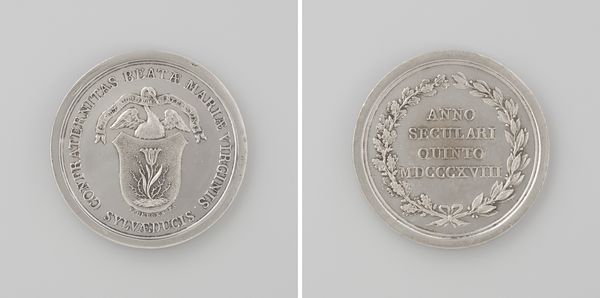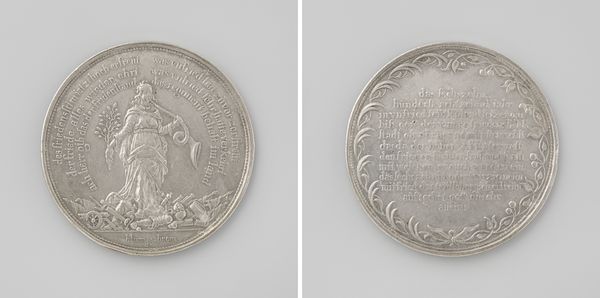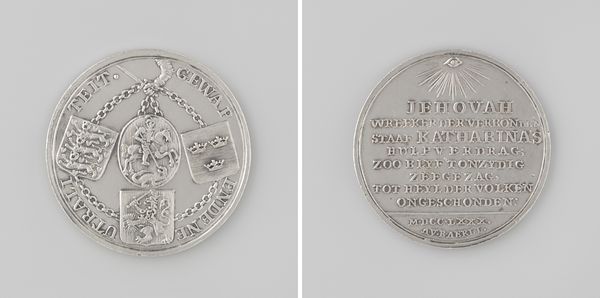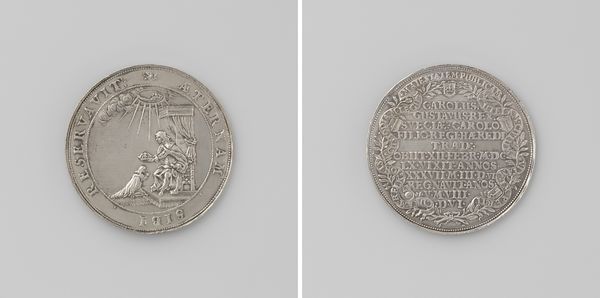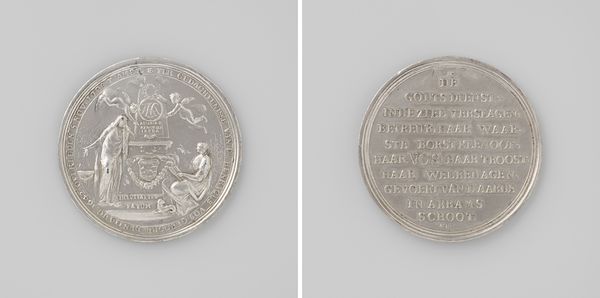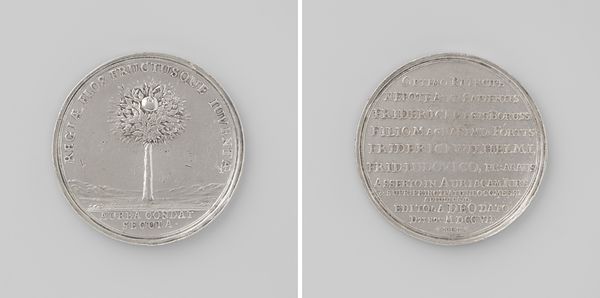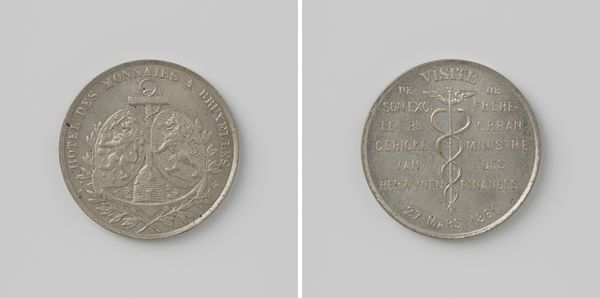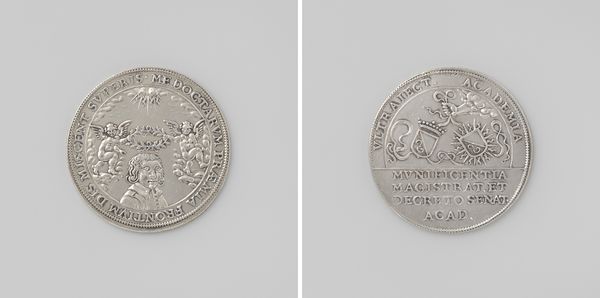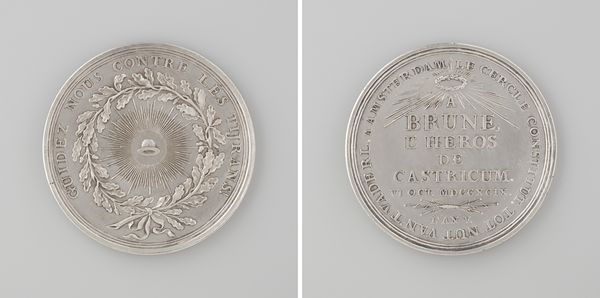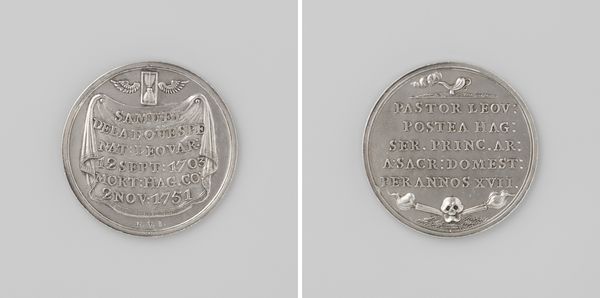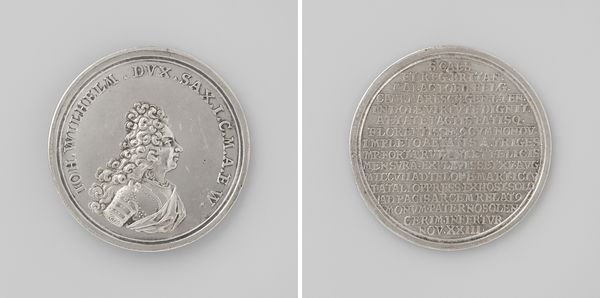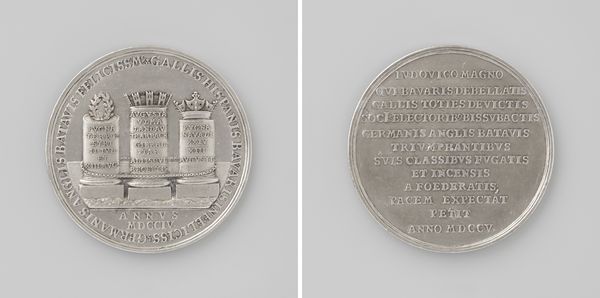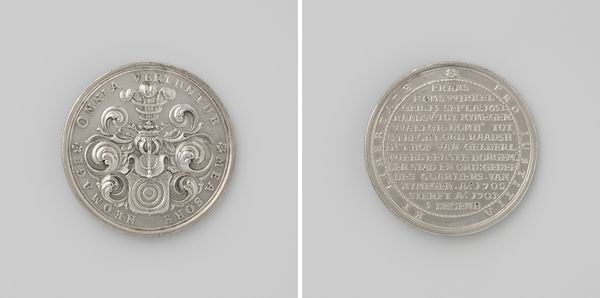
Vijftigjarig huwelijk van Cornelis Gerrit Fagel, raadsheer aan het Hof Holland, Zeeland en West-Friesland en Elisabeth Dierquens 1743
0:00
0:00
print, metal, engraving
#
portrait
#
baroque
# print
#
metal
#
history-painting
#
engraving
Dimensions: diameter 4.5 cm, weight 35.53 gr
Copyright: Rijks Museum: Open Domain
Curator: So, here we have a celebratory medal commemorating the golden wedding anniversary of Cornelis Gerrit Fagel and Elisabeth Dierquens, crafted in 1743 by Nicolaas van Swinderen. Editor: My goodness, it’s like holding a miniature monument! There's such intricacy crammed onto those metallic discs – both sides. It gives off a strong air of, well, dignified formality, wouldn’t you agree? Curator: Absolutely. This piece functions as a visual testament to the social and political climate of the Dutch elite. Medals like these weren't mere keepsakes. They functioned as very public statements of power and lineage. Note the detailed coat of arms on one side; it visually anchors the Fagel family’s prestige within society. Editor: Lineage expressed with… birds? And, perhaps chevron? Crests are so enigmatic! But looking closer, it's clearly more than a simple family memento. The Latin inscription—"Felices L Annorum Concordi Contugio Posteris"—seems to declare this a monument to divine grace and marital concord. The inscription ensures future generations recognize this milestone. Did such a formal commemoration carry any tangible social or political influence? Curator: Undoubtedly! Think of it as seventeenth century social media! Circulation mattered. These medals became powerful symbols, traded among political allies and admirers, effectively cementing social ties and advertising their familial success and devotion to the broader community. Editor: That is such a different take than just some marital milestone. It's funny to think of something so solemn and official, carrying an essence of…promotion! I think I was also influenced by the color. That silver almost makes the celebration feel cold. Curator: Perhaps that’s partly a reflection of our own relationship to tradition and social status versus the sensibilities of the Dutch elite in 1743. Though they are also beautiful pieces, reflecting a certain level of wealth. And to some extent the Baroque style captures and promotes just that with visual intensity and detail. Editor: Thinking of social roles makes me want to dig more deeply into who Swinderen was, as well, and how his position would influence his designs. Curator: Exactly, so many stories bound to one little coin!
Comments
No comments
Be the first to comment and join the conversation on the ultimate creative platform.
